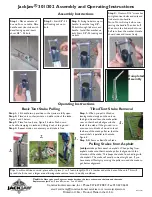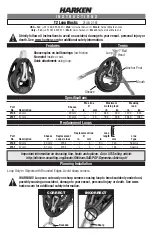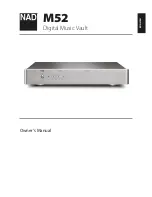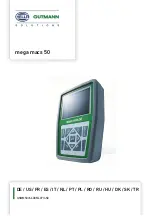
23
1600751-4D
4.3.6 High Voltage
This current type has a twin peak monophasic waveform with a fixed duration of 64 µs between
the two voltage peaks. The amplitude is adjusted in volts rather than in mA. The short rise time
and short duration of each voltage peak (approximately 7 µs) is well suited to nerve stimulation
and efficient discrimination between sensory, motor and pain responses. The very short pulse
duration of high voltage creates a stimulation which is quite comfortable, and one which most
patients can tolerate. The very short pulse duration followed by a very long interpulse interval
eliminates the formation of any appreciable chemical or thermal effects in the tissue. High
voltage is used for stimulating nerves and muscles, causing muscle contractions. Examples for
clinical use are to treat acute or chronic pain, edema absorption and ulcer healing. Muscle
contraction or motor response of isolated muscle groups, superficial or deep, can be easily and
comfortably stimulated. The relative comfort and depth of penetration may be the key for the
usefulness of high voltage stimulation in clinical conditions such as tendon transplants, joint
mobilization and muscle re-education.
Parameters:
Pulse Frequency
, expressed in Hz or pps (pulses per second), defines the repetition rate of the
twin pulses. See 13.5 for details.
Frequency Modulation
, expressed in %,
defines a variable frequency range that is subtracted
from the Pulse frequency i.e. when the Pulse frequency is set to 80 Hz and the Frequency
modulation is set to 50%, the final frequency will vary from 40
–
80 Hz.
Modulation Program
defines the time and sequence in which the frequency will sweep through
the Frequency modulation range. See for the available Modulation programs fig 13.11
–
Alternation Mode
defines whether the polarity of the pulses is automatically alternating or not.
Alternation Sequence
, expressed in seconds, defines the polarity reversal timing in the
alternating mode.
Surge Program
can be used to adjust repeated sequences of contraction and rest periods. See
paragraph 11.2.11.a for details. Surge programs are only available in the non alternating mode.
4.3.7 Diadynamic Currents
The Diadynamic currents were introduced by Bernard
(2)
and they have won a significant position
in the history of European physiotherapy. They are now somewhat unfairly dismissed as
outdated when compared with Interferential currents or TENS. Diadynamic currents are mainly
used for pain reduction and the improvement of blood circulation.
Bernard uses the term ‘Diadynamic Current’ t
o refer to a monophase (MF
–
Monophasé Fixe) or
double-phase (DF
–
Diphasé Fixe) rectified alternating current. The frequency was directly
derived from the mains supply, resulting in sinusoidal pulses with a duration of 10ms. This
phase time of 10ms will mainly depolarize thick fibers. Stimulation of thin fibers can only be
obtained at higher current amplitudes.
2 Bernard, Pierre D.
La thérapie diadynamique,
Paris, Editions ‘Physio’, 1962.
CAUTION:
•
Diadynamic currents are monophasic currents that produce electrolysis by-products.
These by-products can result in burns beneath the electrodes. Always use properly
moistened sponge / electrode combinations to absorb these by-products during
treatment. See paragraph 10.1.5 for details.
Содержание 1600905
Страница 1: ...6 series User Manual ...
Страница 3: ...6 series User Manual ...
Страница 4: ......
Страница 5: ...3 1600751 4D ...
Страница 90: ...88 1600751 4D ...
Страница 92: ...90 1600751 4D 13 6 3 LP 13 6 4 CP 13 6 5 CPid ...
Страница 94: ...92 1600751 4D 13 7 4 IG50 Biphasic Envelope 13 7 5 IG100 Monophasic Envelope 13 7 6 IG100 Biphasic Envelope ...
Страница 95: ...93 1600751 4D 13 7 7 IG150 Monophasic Envelope 13 7 8 IG150 Biphasic Envelope ...
















































